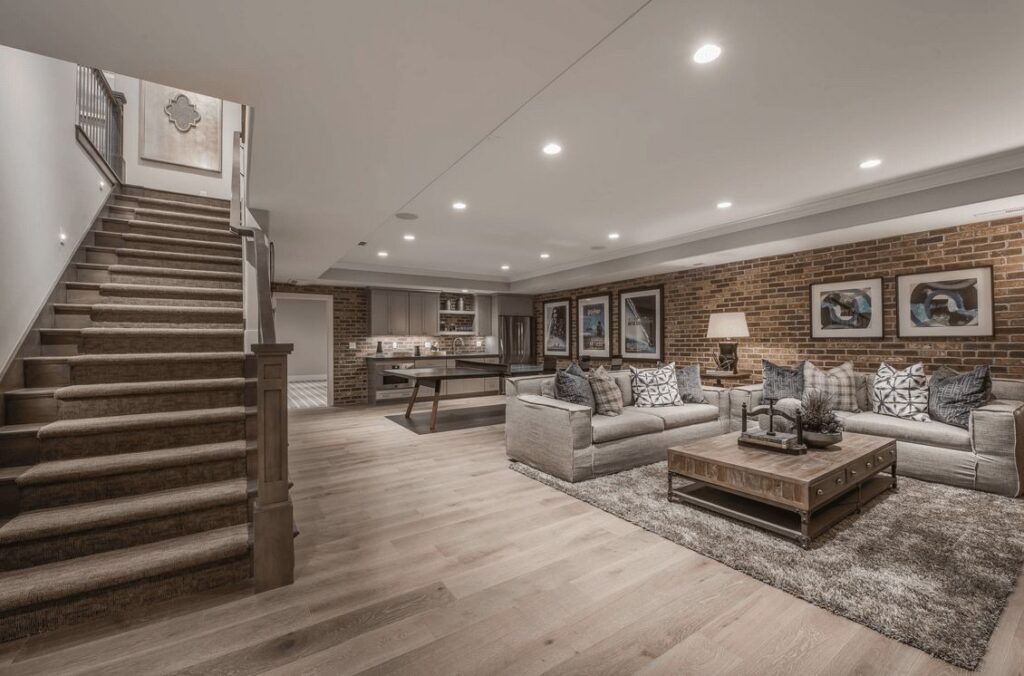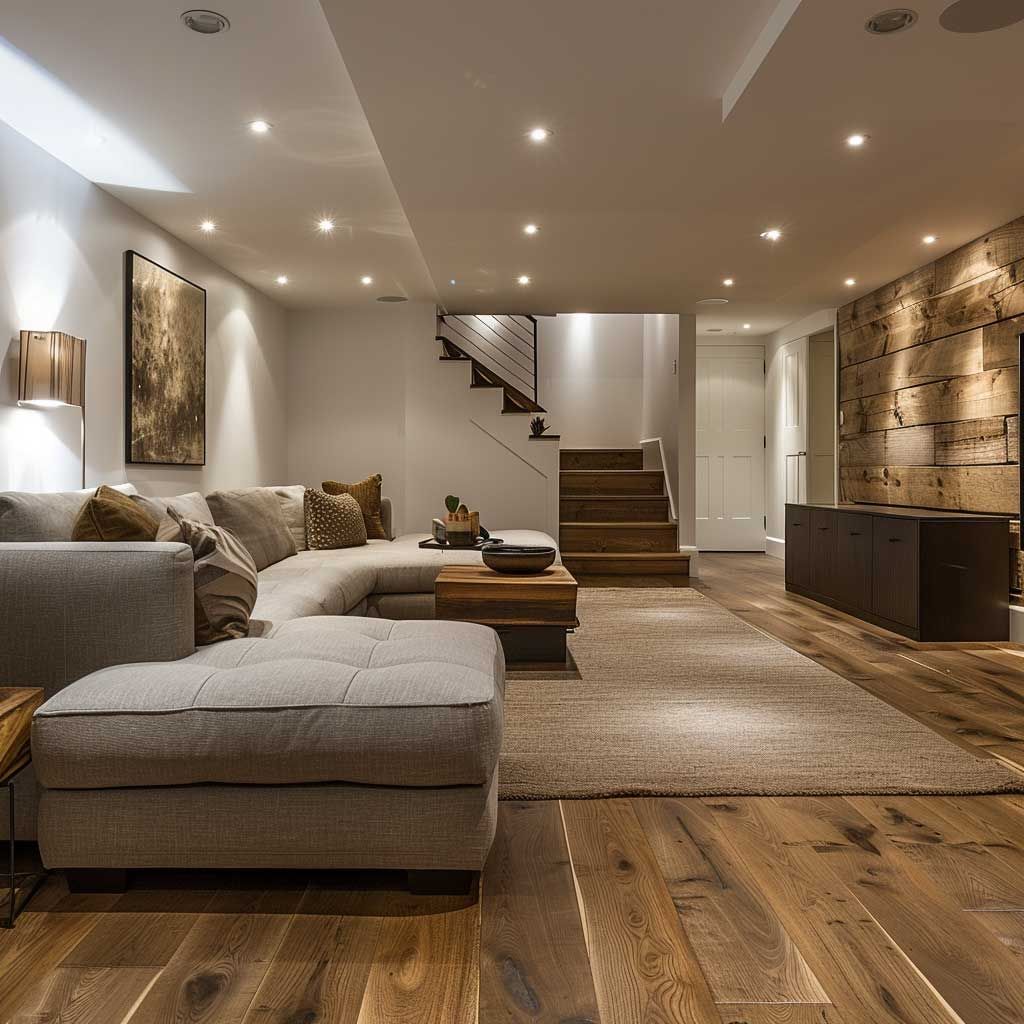Finishing a basement can add valuable living space to your home, but knowing where to begin is key. Rushing into design choices without addressing the fundamentals can lead to costly mistakes. Before thinking about flooring, lighting, or décor, it’s important to start with a solid foundation.
From moisture control to layout planning, the first steps set the stage for a successful project. Once the essentials are in place, you can focus on transforming the space into a functional and stylish extension of your home. In this article, we’ll cover what you need to know to get started.
Things to Consider When Finishing a Basement

Lighting, insulation, and moisture control are key to making your basement comfortable and practical. Without proper planning, issues like dampness or poor airflow can affect the space long-term. A well-thought-out design ensures the basement not only fits your home and lifestyle but also remains functional and inviting for years to come. So, here’s what to know before finishing a basement.
Lighting and Electrical Work
Basements often lack natural light, so adding the proper lighting makes a big difference. Recessed lights, wall sconces, and floor lamps create warmth and brightness.
Electrical work should support the intended use of the space, so plan outlets carefully. If adding a home theater, ensure there is enough power for electronics. If creating a bar area, install proper wiring for appliances.
HVAC and Insulation
Basements can be colder than the rest of the house. So, proper insulation keeps the space comfortable year-round. You need to seal gaps to prevent drafts and moisture issues.
Heating and cooling should also be part of the plan. You may extend existing HVAC or add independent systems like mini-split units. Proper airflow is also essential to prevent dampness and ensure consistent comfort throughout the space.
Plumbing for Bathrooms or Wet Bars
If you want to add a bathroom or a bar, you need to think about plumbing. Since basements are below the main plumbing lines, getting rid of wastewater can be tricky. You might need a sump pump or an up-flush system to help with drainage. Planning your plumbing early saves time and prevents costly mistakes later.
Egress Windows for Safety
Building codes often require an egress window if the basement includes a bedroom. This window acts as an emergency exit and helps keep the space safe. It also brings in natural light and improves ventilation, making the basement feel more open and livable. If installing one, ensure it meets size and placement regulations and complies with local codes.
Soundproofing for Privacy
A basement can be noisy. If it’s used as a media room or play area, soundproofing helps reduce noise transfer to other parts of the house. Insulation, special drywall, and carpets all help control sound.
Choosing the Right Materials
Materials should be resistant to moisture. Because basements naturally have more humidity, avoid materials that absorb water. Mold-resistant drywall, vinyl or tile flooring, and proper sealing help prevent issues.
Looking for professional basement finishing? Check out Basement Finishing in Downingtown, PA.
The Design and Build Process for Basements
Once the planning is complete, the actual construction begins. Each step is important and should be done correctly to avoid problems later.
Framing and Insulation
The first step is to build the framework for walls and ceilings, which creates the basement’s structure. Insulation is then added to keep the space warm in winter and cool in summer. It also helps reduce noise.
Electrical and Plumbing
Next, electrical wiring and plumbing are installed. This step includes placing outlets, light fixtures, and necessary plumbing for bathrooms, wet bars, or laundry rooms.
Drywall and Flooring
Once wiring and plumbing are complete, drywall is installed to create finished walls and ceilings. Then, based on the room’s purpose, flooring is added. Moisture-resistant materials like vinyl or tile work well in basements.
Final Touches
The last step is to paint, install trim, and add lighting. These details complete the basement and make it feel like an extension of the home. Furniture, decor, and storage solutions bring the space to life.
Each step requires careful attention to detail. Rushing the process can lead to mistakes, so take your time and enjoy a high-quality, lasting finish.
Do I Need a Permit to Finish My Basement?
Most basement projects require permits to ensure safety and compliance with local building codes. These permits cover electrical work, plumbing, insulation, and structural changes. Requirements vary by location, so checking with local authorities before starting the project is essential. You might face fines, delays, or issues when selling your home without the proper permits. Additionally, unpermitted work could cause problems with insurance claims if damage occurs later.
How Long Does It Take to Finish a Basement?
The timeline depends on the complexity of the project. A basic remodel with minimal changes may take a few weeks, while a full basement conversion with new walls, plumbing, and electrical work can take several months. Factors like permits, contractor availability, and material delivery times can also affect the schedule. Planning and working with experienced professionals can help keep the project on track and minimize unexpected delays.
What Type of Flooring Works Best in a Basement?
Basements are prone to moisture, so choosing flooring that withstands damp conditions is essential. Vinyl, tile, and engineered wood are durable options that resist water damage while maintaining a stylish look. Use a moisture barrier underneath to prevent mold and mildew growth if you prefer carpet. Sealing concrete floors can also add an extra layer of protection. Consider factors like insulation, comfort, and maintenance when selecting the best flooring for your finished basement.
Transform Your Basement with Windle Design and Construction

Bringing elegance and functionality to a basement requires expert craftsmanship and attention to detail. Windle Design and Construction specializes in high-end basement transformations, creating refined spaces that enhance style and comfort. From sophisticated lounges to private guest suites and luxury entertainment areas, their team delivers exceptional results with a seamless design process.
Make your basement a beautiful extension of your home. Contact Windle Design and Construction to bring your vision to life.
